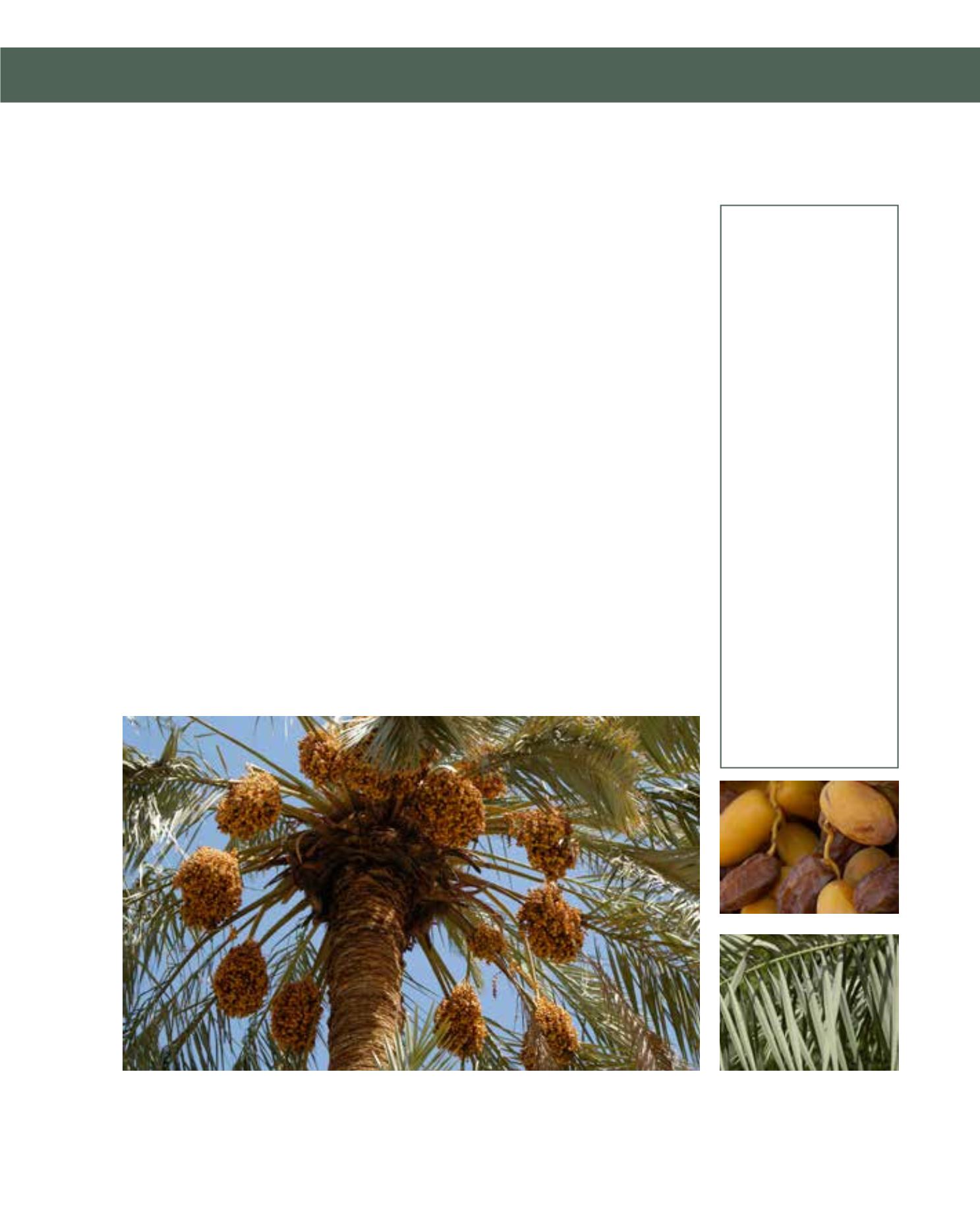

GENERAL
Origin
:
Mediterranean,
sub-tropical,
tropical
Vigour
:
slow-growing
Humidity
:
very arid, semi-
arid, semi-humid,
very humid
Propagation :
sowing and
pricking out,
division,
Meristem culture
Maintenance :
high
CONDITIONS
Urban climate :
resistant
Dessication :
resistant
Stagnant water :
vulnerable
Irrigation
:
high
Salinity/ppm :
very high (20000
ppm)
Hardiness
:
-9°C
SHAPE
Type
:
palms
Height
:
25 m-45 m
Spread
:
7 m-12 m
Foliage
:
evergreen
FLOWER
Colour
:
yellow, green
Size
:
10 cm - 100 cm
Period
:
February - May
FRUIT
Type of fruit :
drupe(fleshy/
juicy)
Fruit size
:
2.5 cm - 7.5 cm
Toxicity
:
produced for
food, edible, fruit
The Date Palm is native to the Kingdom and is widely cultivated in groves throughout the country.
It grows slowly to a height of 25 metres and a spread of 12 metres. It may take 15 years to attain 3
metres. The stiff, sharp-pointed, pinnate leaves are over 3 metres long. The length and shape of the
leaves vary according to the cultivars. A tree can form 10–20 leaves a year, depending on the cultivar
and agricultural practices. The floral buds in the axils of the leaves bring forth spikes of small, yel-
lowish flowers from late February to May. Date Palms are naturally wind-pollinated, but on farms
they are manually pollinated by skilled labourers; a male tree produces enough pollen to pollinate
up to 50 female trees. When pollinated, female trees produce large pendulous clusters of cylindrical
orange to brown fruits, which stand out from the base of the fronds. Dates when unripe, they range
from red to bright yellow in colour. The Date Palm requires full sun, but will tolerate shade. Trees are
frost-resistant. Being drought-tolerant, regular irrigation is necessary for good fruits, and the plants
appreciate deep watering in summer. In winter, a tree will need only half of the summer irrigation
rate. The tree prefers well-drained, deep, sandy loams and tolerates salinity. It is best planted in late
spring or summer. Date Palms require good and regular fertilising. Tree hole lancing with a mixture
of sand and fertiliser in spring is also very effective. Propagation is by seed or best from suckers. Date
Palms are affected by many pests, which attack the trunk and growing points. The most dangerous
is the Red palm weevil (Rhynchophorus ferrugineus), which is difficult to detect in the early stages
of infestation. The initial signs are holes and the oozing of a brown viscous liquid on the trunk or
in the crown. Eventually, the entire crown of the tree will wither and begin to fall off. This is now a
worldwide problem. Weak or transplanted large specimens seem to be the main victims. Other pests
are leaf skeletonisers and scale insects. Date palms require intensive maintenance and cultivation.
Date Palms are easily transplanted to new locations and there are specific procedures for this. The
Date Palm is a magnificent, all-round tree, spectacular in culture on farms, and it lends itself splen-
didly to landscape design in Arriyadh. It makes a beautiful, almost ceremonial roadside tree. Seen
on a skyline, it produces an oasis effect. Too large for most small gardens, it is an excellent park tree,
as a specimen or background planting or for shade on pathways. It is also effective when planted
near tall buildings.
230
Phoenix dactylifera,
Arecaceae
Date Palm,
nakheel al balah
















